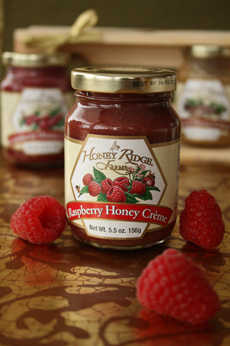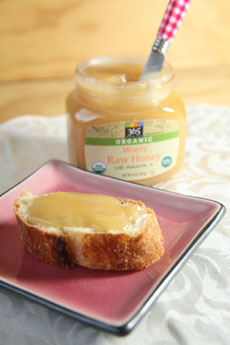TIP OF THE DAY: Creme Honey
|
Like honey but not the dripping and sticky mess?
Try creme honey. It’s in a semi-solid state and as spreadable as butter. In many countries around the world, it’s preferred to the liquid/syrup form of honey (see the different types of honey). Creme honey—also known as churned honey, creamed honey, cremed honey, honey fondant, sugared honey, spun honey and whipped honey—is brought to market in a finely crystallized state. It can be made from any honey varietal or blend, and can also be flavored. (We particularly like the flavored creme honeys from Honey Ridge Farm, available in apricot and raspberry). Enjoy it drip-free on: |
|
|
|
HOW CREME HONEY IS MADE While all honey will crystallize over time, creme honey is intentionally crystallized via a controlled process so that, at room temperature, the honey can be spread like butter. The method to produce creme honey was patented in 1935. Previously processed creamed honey is added to pasteurized liquid honey and rested at a controlled temperature for a week, until the entire batch crystallizes. |
||
 Creme honey is also available in fruit flavors. Photo courtesy River Soma | THE NIBBLE. |
FOOD TRIVIA: CREME VS. CREAM
What’s the difference between creme and cream? Why is it creme honey instead of cream honey? Crème, pronounced KREHM, is the French word for cream (the word for honey is miel, pronounced mee-EL). In America, French recipes were served at the tables of the wealthy, many of whom knew how to pronounce French properly. As these recipes entered the mainstream, people who did not know French began to pronounce crème as cream. Some people dispensed with the accent mark, to provide a mashup of French and English, and the industry has adopted crème or creme. If you were to write “cream honey,” you would not be incorrect. |
|
|
MORE ABOUT HONEY Check out our Honey Section for the history of honey, varietal honeys, food and honey pairings, recipes, trivia and everything you need for a honey education.
|
||
